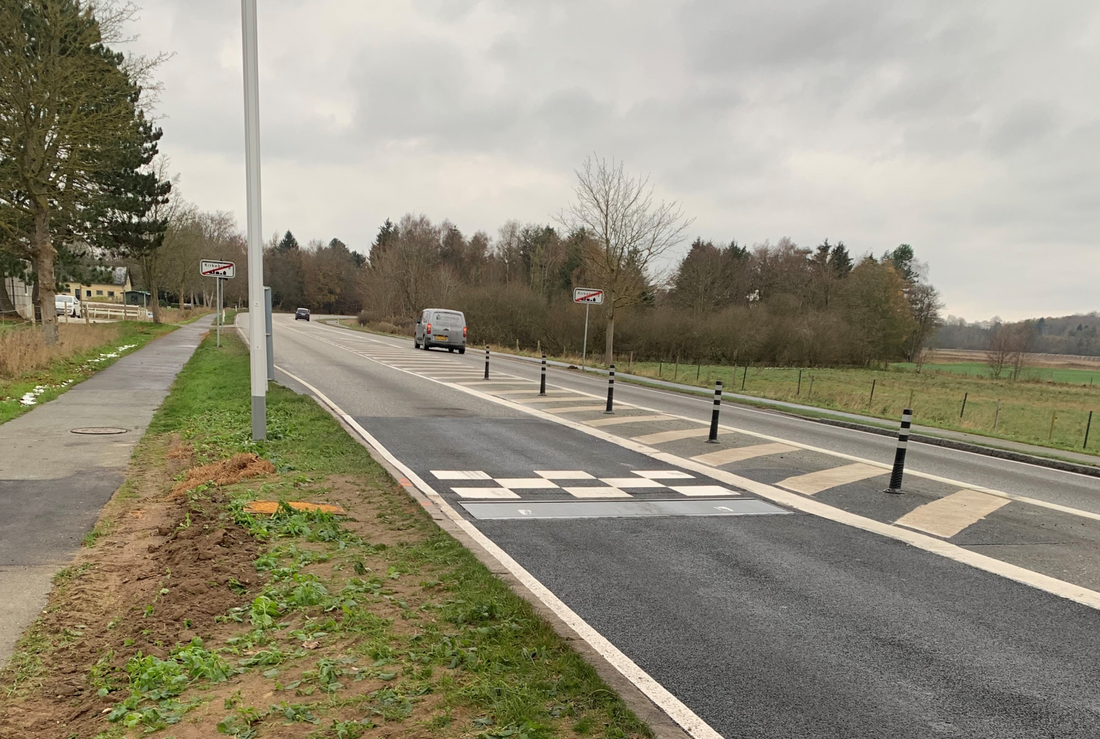From Tuesday 6 December 2022, the first two "intelligent" speed bumps will be activated in Denmark. These speed bumps are only activated if you drive too fast, so all other drivers are therefore unbothered by the bump. The prospect of a more pleasant drive is therefore an extra incentive to ease off the accelerator.
The first speed bumps of this type are now active in Lejre and Vordingborg on the Danish island of Zealand, where they are being tested for one year, followed by an evaluation. Intelligent speed bumps have also been under development in Faaborg, but these are about to be canceled due to noise issues for the nearby residents.
Via a press release (in Danish) sent to Drive One, the Danish Road Directorate has provided further details about the new speed bumps. Contrary to regular speed bumps, which are raised above the ground, the new bumps are actually lowered below the level of the road. The bump consists of a metal plate, which is lowered six centimeters if a speed camera detects excessive speed. The bump will only bother you if you drive over 50 km/h.

Good experiences from abroad
Specifically, the bump is called an Actibump and is developed and distributed by Swedish Edeva. In Sweden, over the past 12 years, the bumps have yielded good results and have worked effectively to reduce speed. Intelligent speed bumps are also used in e.g. Norway, Finland, Iceland, and Australia.
The Danish Road Directorate also states that Actibump will be felt clearly if you drive over it at high speed, but it is not dangerous. The bumps have been thoroughly tested for all types of vehicles, Nordic weather, and - according to the Road Directorate - will not increase the risk of accidents or damage to your vehicle.
Expecting smoother traffic
Already before the activation of the new speed bumps, road users on the sections have slowed down. Foreign experience indicates that the average speed in the vicinity of an Actibump is approximately 5 km/h below the speed limit. Of course, this also indicates that road users do not drive significantly slower than the speed limit.
One of the most positive aspects of the new speed bumps is that they are expected to provide smoother traffic. This is not only positive for road users, but also for the environment. Contrary to a normal speed bump, an Actibump does not require you to slow down considerably if you comply with the speed limit. Thus, e.g. a bus can cross the bump without having to brake and accelerate again, and the traffic has thus not slowed down.
There is already signage ahead of the new speed bumps, so that road users in the area are warned in good time. It will be interesting to see if intelligent speed bumps will be adopted more widely in the future.

(Images by the Danish Road Directorate)

